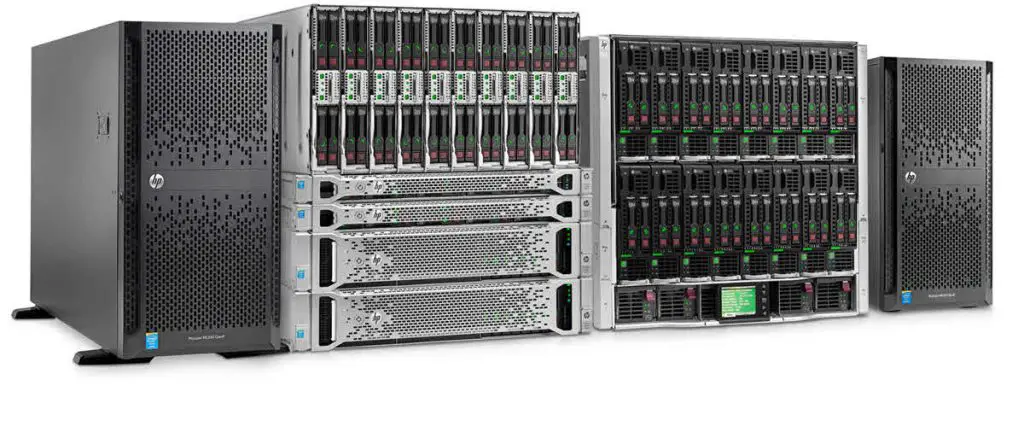Best Server Solutions for Oracle Database in Physical and Virtualization Environments
Mission-critical applications in a variety of industries are powered by Oracle Database, a fundamental component of enterprise data management. Selecting the best server solution is essential to guaranteeing cost effectiveness, scalability, and peak performance. The capacities, technologies, advantages, costs, and suitability for both physical and virtualized environments of various server solutions for Oracle databases such as rack-mounted servers and composable servers are examined in this article.
Introduction to Oracle Database Workloads
Oracle Database workloads vary widely depending on the application. Workloads may involve:
- Transactional Databases: Requiring high IOPS and low-latency storage.
- Data Warehousing: Demanding high processing power and large memory footprints.
- Mixed Workloads: Combining transactional and analytical operations.
- Backup and Recovery Solutions: Focusing on throughput and scalability.
These workloads have distinct requirements for CPU, memory, storage, and network configurations. Therefore, choosing the right server infrastructure is essential to meet performance, scalability, and reliability needs.
Server Solutions for Oracle Database
Oracle Database can be deployed on various server types, each offering unique advantages. The most common categories include:
- Rack-Mount Servers
- Composable Infrastructure
- Blade Servers
- Engineered Systems
- Hyperconverged Infrastructure (HCI)
Let’s dive into each category.
Rack-Mount Server Solution
Overview of Rack-Mount Server Solution
Rack-mount servers are standalone servers designed to fit in standard 19-inch server racks. They are a popular choice for Oracle Database due to their flexibility, performance, and cost-effectiveness.
Key Features:
- Scalability: Scale-out architecture for horizontal growth.
- Flexibility: Wide range of configurations for CPU, memory, and storage.
- Vendor Support: Available from major vendors like Dell, HPE, Lenovo, and Cisco.
Popular Models:
- Dell PowerEdge R750: Offers Intel Xeon Scalable processors, up to 6TB of memory, and NVMe storage.
- HPE ProLiant DL380 Gen11: Features AMD EPYC or Intel Xeon CPUs with robust security.
- Lenovo ThinkSystem SR650 V3: Combines high performance with energy efficiency.
Benefits:
- Lower upfront cost compared to specialized solutions.
- Easily customizable for specific workloads.
- Broad compatibility with Oracle Database software.
Challenges:
- Requires more space and power compared to other options.
- May need third-party solutions for advanced Oracle optimizations.
Composable Infrastructure Server Solution
Overview Composable Infrastructure Server Solution
Composable infrastructure offers a flexible, software-defined approach to resource management. Compute, storage, and networking resources are disaggregated and pooled, enabling dynamic allocation based on Oracle Database workload needs.
Key Features:
- Resource Agility: Allocate resources as needed.
- Automation: Simplify management with APIs and orchestration tools.
- High Utilization: Maximize resource usage by avoiding over-provisioning.
Popular Solutions:
- HPE Synergy: A leader in composable infrastructure, offering modular architecture with high scalability.
- Dell EMC PowerEdge MX: Integrates compute, storage, and networking in a single chassis.
Benefits:
- Enhanced flexibility for mixed workloads.
- Reduced hardware sprawl.
- Seamless integration with Oracle Cloud solutions.
Challenges:
- Higher initial investment compared to traditional servers.
- Requires expertise for deployment and management.
Blade Server Solution
Overview Blade Server Solution
Blade servers are compact, high-density servers housed in a chassis. They are a popular choice for data centers with limited space.
Key Features:
- Density: High compute power in a small footprint.
- Energy Efficiency: Shared cooling and power reduce operational costs.
- Centralized Management: Simplifies administration.
Popular Solutions:
- Cisco UCS B-Series: Offers seamless integration with Cisco networking.
- HPE BladeSystem: Provides robust performance for database workloads.
Benefits:
- Ideal for environments with space constraints.
- Simplifies cabling and power management.
Challenges:
- Limited expandability compared to rack-mounted servers.
- Higher upfront costs per compute unit.
Engineered Systems Server Solution
Overview
Engineered systems are purpose-built for Oracle Database, combining optimized hardware and software for peak performance.
Key Features:
- Pre-Integrated: Comes pre-configured for Oracle workloads.
- High Performance: Optimized for low latency and high throughput.
- Simplified Deployment: Reduces setup time with pre-tested configurations.
Popular Solutions:
- Oracle Exadata: Purpose-built for Oracle Database with advanced optimizations.
- Oracle Database Appliance (ODA): Simplified solution for small and mid-sized environments.
Benefits:
- Industry-leading performance for Oracle workloads.
- Simplifies management and reduces operational overhead.
Challenges:
- High cost of acquisition and maintenance.
- Vendor lock-in with limited flexibility.
Hyperconverged Infrastructure (HCI) Server Solution
Overview
HCI integrates compute, storage, and networking into a single platform, offering simplicity and scalability.
Key Features:
- Software-Defined: Centralized management via software.
- Scalability: Start small and scale as needed.
- Flexibility: Supports diverse workloads, including Oracle Database.
Popular Solutions:
- VMware vSAN: Ideal for virtualized Oracle Database environments.
- Nutanix Enterprise Cloud: Provides robust Oracle Database support.
Benefits:
- Simplifies infrastructure management.
- Optimized for virtualized deployments.
Challenges:
- Performance may lag behind engineered systems for large-scale deployments.
- Initial setup costs can be high.
Comparison Table of Server Solution
| Feature/Metric | Rack-Mount Servers | Composable Infrastructure | Blade Servers | Engineered Systems | Hyperconverged Infra |
|---|---|---|---|---|---|
| Performance | High | High | Moderate to High | Very High | Moderate to High |
| Scalability | Horizontal | Dynamic | Moderate | Vertical | Horizontal |
| Cost | Moderate | High | High | Very High | Moderate to High |
| Complexity | Moderate | High | Moderate | Low | Low |
| Deployment Time | Moderate | High | Moderate | Low | Low |
| Space Efficiency | Low | High | Very High | Moderate | Moderate |
| Best Use Case | General-purpose DB | Mixed workloads | Space-constrained DCs | Performance-critical DB | Virtualized DB |
Factors to Consider When Choosing a Server Solution
- Workload Characteristics: Transactional vs. analytical.
- Budget Constraints: Upfront vs. operational costs.
- Scalability Needs: Anticipated growth in data and users.
- Management Overhead: IT staff expertise and tools.
- Vendor Support: Availability of local and remote support.
Conclusion
Choosing the best server solution for Oracle Database depends on the specific workload, budget, and operational priorities. Rack-mounted servers provide a cost-effective and flexible option for many use cases. Composable and blade servers cater to environments needing high resource density or dynamic allocation. Engineered systems offer unparalleled performance but come at a premium, while hyperconverged infrastructure is ideal for virtualized Oracle environments.
Assess your organization’s requirements and long-term goals to select the server solution that aligns with your needs, ensuring that your Oracle Database operates efficiently and reliably.
Further Reading
Silent Data Corruption: Understanding, Prevention, and Recovery
What’s Best Solution for Storing Oracle Database External Files in VMware vSphere?
Understanding vTopology in vSphere 8: A Deep Dive into NUMA and vNUMA Management
Vector Databases: Use Cases and Best Practices in VMware vSphere Environments
True Cache vs. Traditional Caching: A Clear Winner Emerges
Direct NFS: The #1 and Ultimate Network File Storage Solution for Oracle Databases










